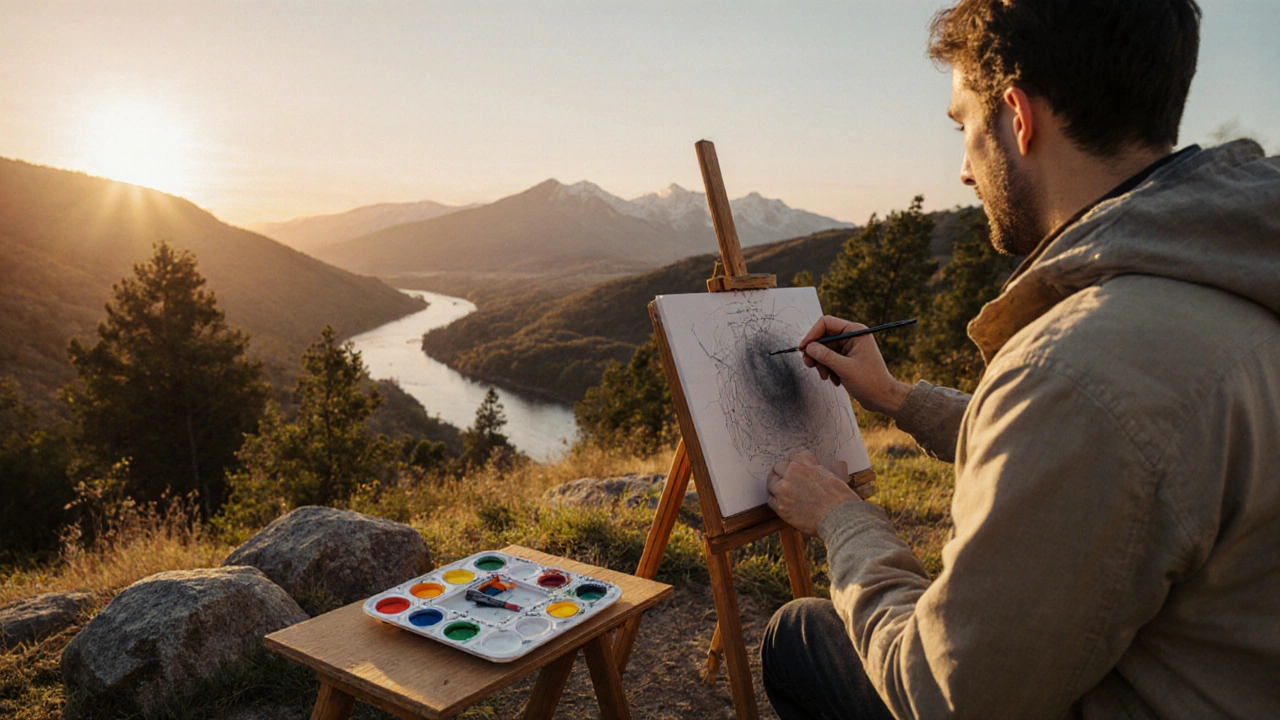Landscape Painting Rules: Essential Guidelines for Artists
12 Oct 2025Learn the essential rules for landscape painting, from composition and color palette to perspective, lighting, brushwork, and choosing the right medium.
Continue reading...When working with Outdoor Painting Tips, practical advice for creating art outside the studio. Also known as outside painting guidance, it helps artists handle weather, surface choice, and fast‑dry techniques to keep projects alive in any climate.
One major Street Art, large‑scale visual work applied directly to public walls and streets, relies heavily on outdoor painting know‑how. Artists must balance color vibrancy with durability, which is why mastering the outdoor painting tips can turn a simple mural into a city landmark. Street Art often shares tools with graffiti, but its purpose leans more toward storytelling than quick tagging. Understanding this difference lets you pick the right spray cans, primers, and sealants for long‑lasting impact.
Another powerful approach for outdoor work is Alla Prima, the wet‑on‑wet painting technique where each layer is finished before it dries. This method cuts drying time, a huge advantage when rainfall or high humidity threatens your session. By working wet‑on‑wet, you can blend colors directly on the surface, create soft edges, and finish a piece in a single day. Pair Alla Prima with the three‑bucket rule—one bucket for whites, one for blacks, and one for mixed colors—to keep your palette consistent even when the wind blows dust onto your workspace.
Color theory plays a crucial role when painting outdoors, especially in natural settings. Complementary Colors, pairs of hues opposite each other on the color wheel that intensify each other when placed side by side, can make a garden mural pop against greenery. Knowing which plant foliage or sky tones contrast best lets you design compositions that stay vibrant under sunlight. The same principle helps you adjust pigments for UV resistance, ensuring your artwork doesn’t fade after weeks of exposure.
Surface preparation is the foundation of any successful outdoor project. Rough concrete, brick, or wood each demand specific primers to seal pores and improve paint adhesion. A thin layer of acrylic gesso works well on raw wood, while a masonry primer protects brick from moisture. After priming, a clear UV‑resistant varnish acts as a final shield, keeping colors true during summer heat and winter chill. Skipping these steps often leads to peeling, cracking, or fading—problems that even the best artistic skill can’t fix.
Equipment choices also matter. Portable drop cloths, weather‑proof paint trays, and a lightweight ladder give you mobility without sacrificing safety. When you anticipate rain, bring a pop‑up canopy or a simple tarp to keep wet surfaces dry until the final coat cures. Small, travel‑size spray bottles of water help you control drying speed, especially with oil‑based paints that otherwise set too fast in hot sun.
All these pieces—street art awareness, Alla Prima speed, complementary color planning, solid surface prep, and smart gear—form a complete toolbox for any artist tackling the great outdoors. Below you’ll find a curated selection of guides that dive deeper into each area, from graffiti legality to landscape color palettes, giving you actionable steps to bring your outdoor visions to life.

Learn the essential rules for landscape painting, from composition and color palette to perspective, lighting, brushwork, and choosing the right medium.
Continue reading...